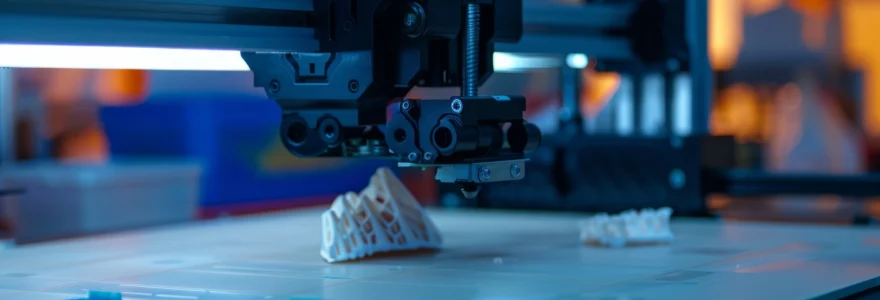Prototyping is a crucial step in the product development process, allowing you to validate ideas, gather feedback, and refine concepts before committing significant resources. By creating tangible representations of your ideas, you can identify potential issues early, reduce development costs, and increase the likelihood of success. Effective prototyping requires a strategic approach, combining the right methodologies, tools, and user-centered design principles to create meaningful insights that drive product development forward.
Defining Prototyping Objectives and Scope
Before diving into the prototyping process, it's essential to clearly define your objectives and scope. What specific questions do you want to answer through prototyping? Are you looking to validate core functionality, test user interface design, or explore different feature sets? By establishing clear goals, you can focus your efforts and resources on the most critical aspects of your idea.
Consider creating a prototyping brief that outlines your objectives, target audience, and key metrics for success. This document will serve as a roadmap for your prototyping efforts and help keep your team aligned throughout the process. Remember to keep your scope manageable – trying to prototype every aspect of your product can lead to overwhelm and diminished returns.
When defining your prototyping objectives, it's helpful to use the SMART framework: Specific, Measurable, Achievable, Relevant, and Time-bound. For example, instead of a vague goal like "test user interface," you might set an objective to "evaluate the completion rate of the checkout process for first-time users within a 5-minute session."
Selecting Appropriate Prototyping Methodologies
Once you've established your objectives, the next step is to choose the most appropriate prototyping methodology. The right approach will depend on factors such as your project stage, available resources, and the specific aspects of your idea you want to validate. Let's explore some common prototyping techniques and their applications.
Low-Fidelity vs. High-Fidelity Prototyping Techniques
Prototypes can range from simple sketches to fully functional applications. Low-fidelity prototypes are quick and inexpensive to create, making them ideal for early-stage ideation and concept validation. High-fidelity prototypes, on the other hand, offer a more realistic representation of the final product and are better suited for detailed user testing and stakeholder presentations.
Paper Prototyping for Rapid Concept Validation
Paper prototyping is a highly effective technique for quickly validating ideas and gathering initial feedback. By creating rough sketches of your user interface and interactions, you can test the fundamental concepts of your product without investing significant time or resources in digital development.
Digital Wireframing and Interactive Mockups
As your ideas become more refined, digital wireframing and interactive mockups provide a more sophisticated way to validate your concepts. These prototypes allow you to create clickable interfaces that simulate the basic functionality and navigation of your product.
Tools like Sketch, Figma, and Adobe XD offer powerful features for creating interactive prototypes without requiring extensive coding knowledge. By linking screens and adding basic interactions, you can create a more immersive experience for users to test and provide feedback on your ideas.
Functional Prototypes and Minimum Viable Products (MVPs)
For more complex ideas or when you need to validate technical feasibility, functional prototypes and MVPs become invaluable. These higher-fidelity prototypes incorporate actual code and functionality, allowing you to test real user interactions and gather more accurate data on user behavior.
Leveraging Prototyping Tools and Technologies
The right tools can significantly enhance your prototyping efforts, allowing you to create more sophisticated prototypes in less time. When selecting prototyping tools, consider factors such as your team's skill set, the required fidelity of your prototypes, and the need for collaboration features.
Some popular prototyping tools include:
InVisionfor creating interactive wireframes and mockupsAxure RPfor complex, high-fidelity prototypesFramerfor prototyping advanced interactions and animationsMarvelfor simple, collaborative prototyping
Many of these tools offer integrations with design software like Sketch or Figma, allowing for seamless workflows between design and prototyping stages. Additionally, consider exploring emerging technologies like virtual reality (VR) or augmented reality (AR) for prototyping immersive experiences.
At vivatech, you can discover cutting-edge prototyping technologies and learn from industry leaders about the latest trends in product development and innovation.
Translating Prototype Insights into Product Development
The ultimate goal of prototyping is to inform and guide your product development process. As you gather insights from your prototyping efforts, it's crucial to effectively communicate these findings to your development team and stakeholders.
Create detailed documentation of your prototyping results, including:
- Key user insights and pain points identified
- Successful design patterns and interactions
- Areas requiring further iteration or exploration
- Prioritized list of features and improvements
Use visual aids like annotated screenshots, user flow diagrams, and before-and-after comparisons to illustrate the evolution of your prototype and the rationale behind key design decisions.
Involve your development team early in the prototyping process to ensure that your ideas are technically feasible and aligned with your overall product architecture. This collaboration can help bridge the gap between design and development, leading to smoother implementation and fewer surprises during the build phase.
As you transition from prototyping to development, maintain a flexible mindset. New challenges or constraints may emerge during the build process, requiring further iterations or adjustments to your initial concept. By maintaining open lines of communication between design, development, and user research teams, you can adapt quickly and ensure that your final product stays true to the insights gained through prototyping.
Effective prototyping is a powerful tool for validating ideas and creating products that truly resonate with users. By combining the right methodologies, tools, and user-centered design principles, you can minimize risk, accelerate development, and increase the likelihood of launching a successful product. Remember that prototyping is an ongoing process – continue to gather feedback and iterate even after your product launch to ensure long-term success and user satisfaction.
